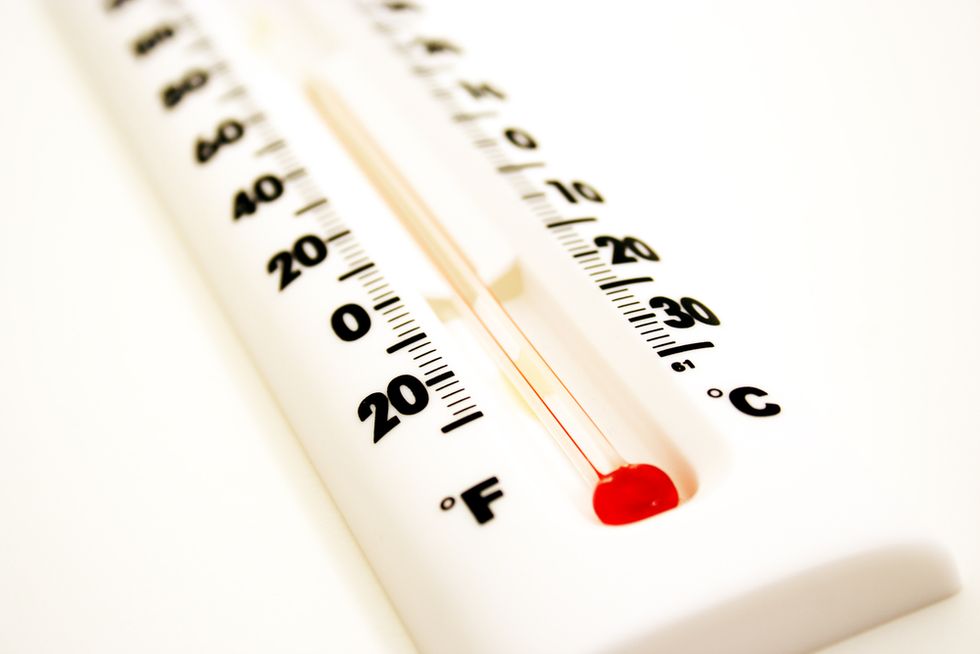For the last decade or so, there has been a "pause" in the rate at which the Earth was warming, and scientists now think they know what caused it.
"The recent slowdown in global warming has brought into question the reliability of climate model projections of future temperature change and has led to a vigorous debate over whether this slowdown is the result of naturally occurring, internal variability or forcing external to Earth’s climate system," the authors wrote in the abstract of a study published in the journal Science this week.
 Scientists say the last 10 to 15 years have seen a "hiatus" in the rate of previously expected global warming, which they attribute to natural variations in the ocean. They believe though this pause might soon be up, at which point they say warming will accelerate again. (Photo credit: Shutterstock)
Scientists say the last 10 to 15 years have seen a "hiatus" in the rate of previously expected global warming, which they attribute to natural variations in the ocean. They believe though this pause might soon be up, at which point they say warming will accelerate again. (Photo credit: Shutterstock)
Using climate observations and models, the researchers found the Pacific multidecadal oscillation and Atlantic multidecadal oscillation contribute "a large portion of internal variability" to average temperatures in the Northern Hemisphere.
"Competition between a modest positive peak in the AMO and a substantially negative-trending PMO are seen to produce a slowdown or 'false pause' in warming of the past decade," the study abstract stated.
Mark Fischetti for Scientific American put this in layman's terms:
The temperature of the Pacific and Atlantic oceans, particularly the upper layers, goes through natural cycles of warmer and cooler, driven by large circulations of water across these and the rest of the world’s seas. Warmer and cooler periods can last several decades. The analysis shows that usually, when the northern Pacific is warming, the northern Atlantic is cooling, and vice versa—offsetting one another in their impact on atmospheric temperatures in the northern hemisphere. But the cycles, and their magnitude, don’t match exactly. For the past decade, the magnitude of northern Pacific cooling has been greater than that of northern Atlantic warming, resulting in a net slowdown in temperature rise, according to an email sent to me by Byron A. Steinman, assistant professor of earth and environmental sciences at the University of Minnesota in Duluth, who led the new study.
But how long will this natural "pause" in the rate of warming thanks to Pacific cooling last?
Michael Mann, director of the Earth System Science Center at Pennsylvania State University and co-author on the paper, told Quartz “the Pacific Ocean has been in a natural ‘cooling’ mode, which has slowed the warming of the globe, but we expect that to reverse in the near future.”
A complementary study published earlier this week in the journal Nature suggests there's a 25 percent chance the "hiatus" will continue for the next five years.
"Therefore, given the recognized contribution of internal climate variability to the reduced rate of global warming during the past 15 years, we should not be surprised if the current hiatus continues until the end of the decade," the study abstract read. "Following the termination of a variability-driven hiatus, we also show that there is an increased likelihood of accelerated global warming associated with release of heat from the sub-surface ocean and a reversal of the phase of decadal variability in the Pacific Ocean."
"The lesson in all this is that even though the oceans run through natural cycles of warming and cooling, pumping more and more greenhouse gases into the atmosphere makes the entire system hotter over time," Fischetti wrote for Scientific American. "In the past decade the oceans have saved us, to an extent, from rapid atmospheric warming, but when the current ocean effect reverses, our emissions will come back to haunt us."
In other climate news this week, scientists reported witnessing carbon dioxide trapping heat in the atmosphere above the United States live in the wild.
The study in the journal Nature demonstrates in real-time field measurements what scientists already knew from basic physics, lab tests, numerous simulations, temperature records and dozens of other climatic indicators. They say it confirms the science of climate change and the amount of heat-trapping previously blamed on carbon dioxide.
Researchers saw "the fingerprint of carbon dioxide" trapping heat, said study author Daniel Feldman of the Lawrence Berkeley National Laboratory in California. He said no one before had quite looked in the atmosphere for this type of specific proof of climate change.
Feldman and colleagues used a decade of measurements from instruments in Alaska and Oklahoma that looked straight up into the sky and matched what they saw with the precise chemical composition and heat fingerprints of carbon dioxide trapping heat. Scientists say carbon dioxide from the burning of coal, oil and gas is the chief cause of global warming.
In doing so, the data show clouds, water vapor or changes in sun's radiation are not responsible for warming the air, as some who doubt mainstream climate science claim, Feldman said. Nor could it be temperature data being tampered with, as some contrarians insist, Feldman said.
"The data say what the data say," Feldman said. "They are very clear that the rising carbon dioxide is actually contributing to an increased greenhouse effect at those sites."
The study is good technical work, said climate scientist Andrew Dessler of Texas A&M University, but it is expected — sort of like confirming gravity with a falling rock.
—
The Associated Press contributed to this report. Front page image via Shutterstock.




